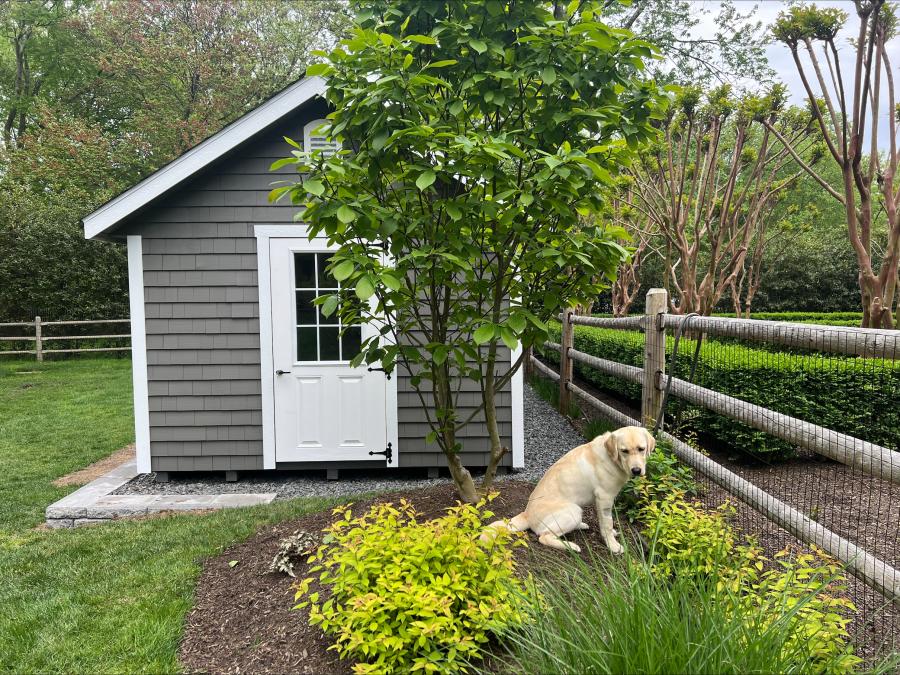An outdoor Amish shed can be a homeowner's best friend – providing extra storage space for everything from tools and gardening supplies to bikes and toys.
But just because you can store certain items in your shed doesn’t mean you should!
Outdoor sheds get exposed to changing temps, humidity, and the occasional uninvited critters, which makes them less than ideal for storing certain types of sensitive items.
In fact, storing the wrong things in your shed can lead to damage and even safety hazards.
To help you avoid shed storage mistakes, here are 7 things you should keep out of your shed, and some recommendations on where you can safely store them instead.

1 - Important Documents
Valuable paperwork like birth certificates, property deeds, social security cards, and tax documents should never be kept in an outdoor shed.
While these kinds of documents don’t take up a lot of space, storing them in your shed can lead to problems.
Outdoor sheds are vulnerable to changing weather conditions, especially in the northeast region of the U.S., where we experience a range of seasons.
Moisture from winter snowstorms or spring rains and high humidity from hot summer months, can cause documents to get moldy and damaged. And extreme heat can cause papers to yellow and get brittle.
Outdoor sheds are also typically less secure than your home, which can leave valuable and irreplaceable documents at risk of theft.
Best storage solution: Put important docs in a filing cabinet or fireproof safe inside your home. For extra security, digitize your documents and store them on your computer or an online cloud storage solution.
2 - Electronics
Think twice before tossing that extra TV or stereo in your shed!
Most electronic devices are sensitive to temperature changes and humidity. Condensation can creep inside the components and cause corrosion and damage. And exposure to summer heat and freezing winter temps can destroy your devices.
Better storage solution: Keep your electronics in a climate-controlled environment inside your home, like a closet or storage room.
Ready to start designing your storage shed?
Speak with a Designer
3 - Paint
“Can paint be stored outside?” or “Can paint be kept in a shed?” are common questions that homeowners often ask. And the answer is a definite no.
Paint should always be stored in a stable, temperature-controlled environment.
Exposure to heat or freezing temperatures can make paint clumpy, separated, and unusable. Once paint freezes and thaws, it loses its smooth coverage and can’t be applied in an even coat.
Better storage solution: Keep paint in your basement, garage, or any other cool, dry place that stays above freezing and below 90°F. Store the cans upside down with tight lids to prevent air exposure.

4 - Musical Instruments
From keyboards to violins, musical instruments don’t belong in a shed.
Many instruments are crafted from wood and are quite sensitive to environmental changes. Fluctuations in temperature and humidity can cause wood to warp, glue joints to loosen, and strings to rust.
Even instruments made of metal, like brass or wind instruments, can get damaged. Heavy moisture can cause corrosion, and extreme temp changes can warp metal.
Better storage solution: Place instruments in climate-controlled rooms inside your home. For extra protection, keep them in padded or hard-shell cases.
5 - Food
It might seem sensible to stash extra canned goods, pet food, or snacks in your shed to free up valuable pantry space. But sheds aren’t pest-proof, which means insects and other pests could potentially access and contaminate your food.
Temperature swings can also cause food spoilage, even in non-perishable items like canned goods or animal feed.
Better storage solution: Keep your food items indoors in a pantry, cupboard, or other climate-controlled space.
6 - Propane Tanks
Do you have a spare propane tank for your grill? Don’t leave it inside your shed.
Sheds can get hot during summer, and heat causes propane to expand. If pressure builds too much inside the tank, the safety release valve could open and cause flammable gas to leak inside the shed – a recipe for disaster.
Better storage solution: Always store a propane tank outside in a well-ventilated area and away from heat sources and direct sunlight.
Want help finding the best shed for your needs?
Speak with a Designer
7 - Wood, Leather, or Fabric Furniture
If you’ve ever thought about using your shed as a storage space for extra furniture, think again.
Furniture that’s made of wood, leather, or fabric isn’t built to withstand outdoor environments, even inside a shed.
Humidity can cause wooden furniture to swell, crack, or warp. Leather furniture can dry out and crack. And fabric upholstery can get moldy in humid conditions.
Better storage solution: Keep furniture in dry, temperature-controlled indoor spaces, or rent a climate-controlled storage unit.
What CAN You Store in an Outdoor Shed?
While some items are off-limits, there are plenty of items that are perfectly suited for year-round outdoor shed storage:
- Tools and hardware
- Gardening supplies
- Sports equipment
- Seasonal items like pool accessories or outdoor furniture
- Bikes, scooters, and other recreation equipment
Just remember to keep your shed organized and functional with add-ons like shelves, wall hooks, cabinets, and storage containers.
And if you really want to store items that require a temperature-controlled space, our team can walk you through different ways to make your shed more climate friendly. Floor insulation, insulated doors, and insulated windows are becoming more common with shed buyers.
Keep Your Belongings Safe with a New Shed from Lancaster Barns
Take your storage skills to the next level with a new Amish shed from Lancaster Barns! Contact us for expert design assistance and a no-obligation quote.


